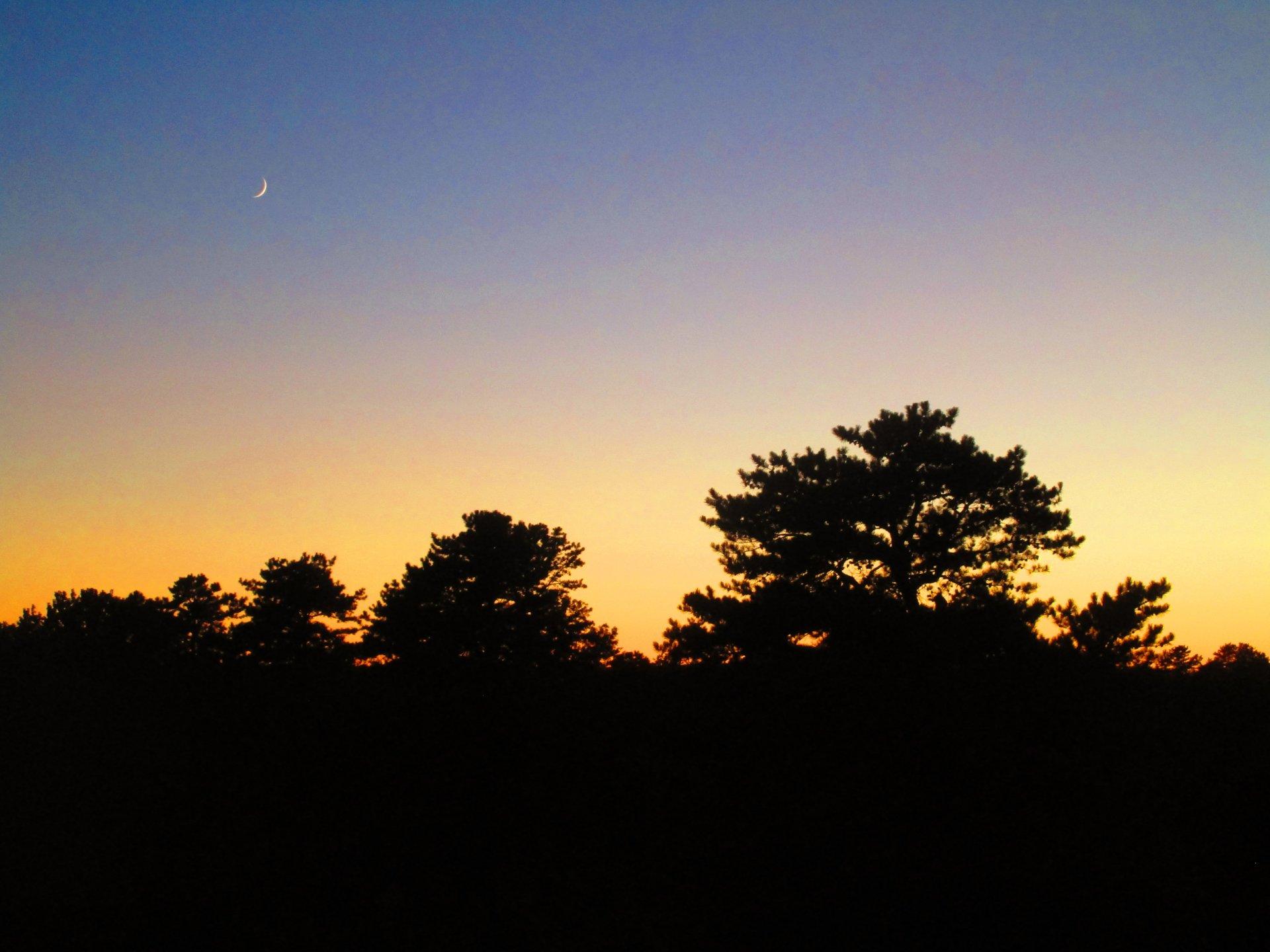ALBANY – On a warm, moonlit night in the Albany Pine Bush Preserve, a group of biologists listened at the foot of a grassy dune for the lilting, three-note song of a once-common nightbird that has now become rare.
“We were pretty excited to hear the whippoorwill here again,” said Neil Gifford, conservation director of the preserve. “It had been 13 years since it was last heard around here.”
Gifford believes intensive work in recent years to restore the rare inland pine barrens to its historic state is responsible for the return of the whippoorwill and other native grass- and shrubland species, including the endangered Karner Blue Butterfly and birds such as Pine Warbler, Prairie Warbler, Indigo Bunting and American Woodcock.
But little is known for certain about the rise and fall of the whippoorwill, common nighthawk and other nocturnal, ground-nesting birds known collectively as nightjars or goatsuckers. The birds haven’t been widely studied, and because they’re nocturnal, they’re easy to overlook in annual bird counts and nesting surveys.
Now, several efforts are under way to evaluate the status of these birds, determine what factors are contributing to their decline and develop programs to help them recover.
“Much of the information we have at this point is anecdotal,” said Pam Hunt, an avian conservation biologist with New Hampshire Audubon who leads the Northeast Nightjar Survey, begun in 2003 to monitor whippoorwills and Chuck-Wills-Widows on a large geographic scale.
“People had been saying that they didn’t hear these birds anymore, and the limited data that we have corroborates that,” Hunt said. “Surveys indicate a pretty dramatic decline throughout their range in the eastern United States in the last 40 years.”
While there are some areas where whippoorwills continue to thrive #- such as sandy grasslands of Long Island, Fort Drum and Clinton County in northern New York, and pine-oak barrens of Cape Cod and the South Shore in Massachusetts #- they’re no longer found in many areas where they nested in the past, such as western New York.
Rebecca Lohnes, a doctoral student at Cornell University, is studying the breeding ecology of common nighthawks in natural gravel patches on the Konza Prairie near Manhattan, Kan. She’s gathering information that will be used in efforts to boost Nighthawk populations by providing gravel nesting areas on store roofs.
Nighthawks were once common in cities where they nested on flat roofs that used pea gravel as a roofing material. The birds’ buzzy “peeent” call could be heard at twilight as they swooped after moths and beetles attracted to city lights.
Biologists suspect that changes in roofing materials from gravel to rubber compounds contributed to the disappearance of urban Nighthawks. In 2007, New Hampshire Audubon started “Project Nighthawk” to try to restore urban-nesting Nighthawks by placing gravel nesting patches on flat roofs.
The decline of Nightjars was first documented when states that had published breeding bird atlases about two decades ago updated them. Such was the case in New York, where the breeding bird atlas surveys completed in 2005 revealed that Whip-Poor-Wills and Common Nighthawks had disappeared from many areas where they were recorded in the atlas published in 1988, said Matthew Medler of the New York State Ornithological Association.
Mike Wilson, a researcher at the College of William and Mary’s Center for Conservation Biology in Williamsburg, Va., launched Nightjar surveys in 10 Southeastern states in 2007 and expanded this year to include the 37 states not covered by the Northeast Nightjar Survey so all 48 contiguous states are included.
Nightjars are the most enigmatic group of birds in North America, with very little known about basic aspects of their biology, habitat use, and population status, Wilson said. Widespread, long-term monitoring using a standard protocol is necessary to determine the population status of these birds, recognize changes in the status and develop conservation programs.
Wilson and Hunt recruit volunteers through Audubon groups, bird clubs, and e-mail groups for birders in each state. Volunteers do roadside counts at night when the moon is at least half full, relying on sound rather than sight, because that’s when Nightjars sing.
“We want to find out where they’re increasing or declining, what are the specific regions where they’re imperiled, and how do complexes of habitats influence their abundance, ” Wilson said. “From that, we’ll get an idea of what we need to do to prevent further declines of these species.”
Several factors have likely contributed to the decline of Nightjars, Wilson said. They include changes in habitat and increased predation by raccoons, foxes, and domestic cats.“
You get a peak in numbers in areas that are about 50 percent forest and 50 percent grassland,“ Wilson said. The birds nest on the ground and hunt for insects over open fields. As old hayfields grow up into forest, or when woods and meadows give way to houses and lawns, habitat is lost.
It could be that the decline of Nightjars is related to the same habitat loss that has adversely affected numerous other bird species, said Gifford in the Pine Bush.“
About 67 percent of shrubland birds have declined since 1980,“ Gifford said. ”About 50 percent of grassland birds have declined, and 25 percent of forest birds.“
Albany’s Pine Bush, a rare habitat of prairie grasses and wildflowers, scrub oaks and pitch pines on rolling sand dunes left by glaciers, once stretched for 125 miles. Now, a patchwork of 3,010 acres is included in the Pine Bush Preserve and about half of that has been restored to its original condition by cutting and burning invasive trees and shrubs.
It may offer clues to what led to the decline of Nightjars, and what might bring them back.
